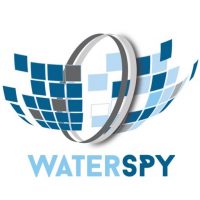Technological Impact
WaterSpy, as a Research and Innovation action, established new knowledge and has explored the feasibility of an improved technology on water quality analysis. Knowledge is brought into the consortium by all partners and is further developed to deliver and validate the complete approach.
- The main novelty of WaterSpy is in the development of the advanced, highly sensitive photonic elements for the identification of the target analytes. Advancements in the emitter and detector parts of the photonics sensors are integrated in a unique way, developing a solution of unprecedented characteristics and clear commercial exploitation capabilities.
- The sensing elements (QCLs and detector) are integrated in a transportable instrument for pervasive water quality sensing. The principle of cost-effectiveness is key for the WaterSpy system.
- The device is complemented by novel subsystems that make possible the autonomous operation of the device and maximize the Signal-to-Noise (SNR) ratio in order to be able to detect single bacteria and meet the EC regulatory requirements.
- The participating companies now, have the opportunity to market a modular and configurable product, compatible with existing solutions: WaterSpy is compatible with AUG’s water quality monitoring systems, but the main technology is also adaptable for completely independent use. The system has the perspective to be expandable for the detection of additional contaminants in the future.
The WaterSpy innovative developments address a real market need, not just at the European, but also at a global level. WaterSpy is an application driven approach, completed by all necessary systems (hardware and software), in order to prove the system’s effectiveness and facilitate its adoption by the end-users. Business opportunities are developed along the entire value chain, starting from the applied photonics industry and directly affecting also the ICT industry (sensor networks, communications). Cooperation is also reinforced between the business sectors mentioned before and the water network operators & authorities, the environment monitoring agencies, the system integrators, the technology installers, the maintenance providers and of course the civil authorities (environment and security).
Social and Environmental
Quality of Life, Health and Safety of the Citizens
Waterborne infectious diseases not only cause preventable illness and death but may also have substantial economic effects on the affected people and their families and the society as a whole, including expenses for healthcare and loss of productivity. It has also been proven that adverse health outcomes are associated with ingestion of unsafe water, lack of access to water (linked to inadequate hygiene), lack of access to sanitation, contact with unsafe water, and inadequate management of water resources and systems. Pathogenic microorganisms remain the most important hazard in drinking and recreational water in the European region and gastrointestinal diseases are still an important cause of child morbidity and mortality in some countries. Viruses (rotavirus, calcivirus, and hepatitis A virus) are responsible for 70- 80% of infectious diarrhoea cases in the developed world, according to the referenced WHO study. Some of the biological agents used in terrorism cause similar health disorders to the ones mentioned above and other can even cause other more catastrophic health hazards. By providing the capability to detect biological agents in the Water network, WaterSpy is expected to contribute effectively and directly by increasing health and safety of European citizens.
Societal Safety and Terrorist Threats
Terrorist threats are targeted not just at individuals, but also at the country’s vital institutions and infrastructure, including drinking water and wastewater systems. Government, water utilities, state and local water agencies, public health organizations, emergency and follow-up responders, and academia, as well as the private sector from across the country must be ready to protect water infrastructure.
WaterSpy, as a novel, in-line, transportable monitoring solution, will assist all related stakeholders to reduce vulnerabilities to terrorism, prevent and prepare for terrorist attacks, minimize public health impacts and infrastructure damage, and enhance recovery from any attacks that may occur.
Environmental Impacts
Real-time monitoring of bacterial (and other) pollutants in the water network has obvious impacts on the environment, which we will refrain from over-analysing here. By preventing the propagation of a pollutant, tons of water can be saved, which could end up in the environment and pose a significant threat, not only to people, but also to the animals and the environment. The technology developed through WaterSpy can also be exploited for the detection of additional analytes and not only bacteria. In fact, the following analytes of high importance for water quality monitoring have fingerprint regions in the near and mid-IR zones: Benzene, toluene and Xylenes isomers (BTX compounds), Vinyl chloride, Naphthalene, Mercury.

